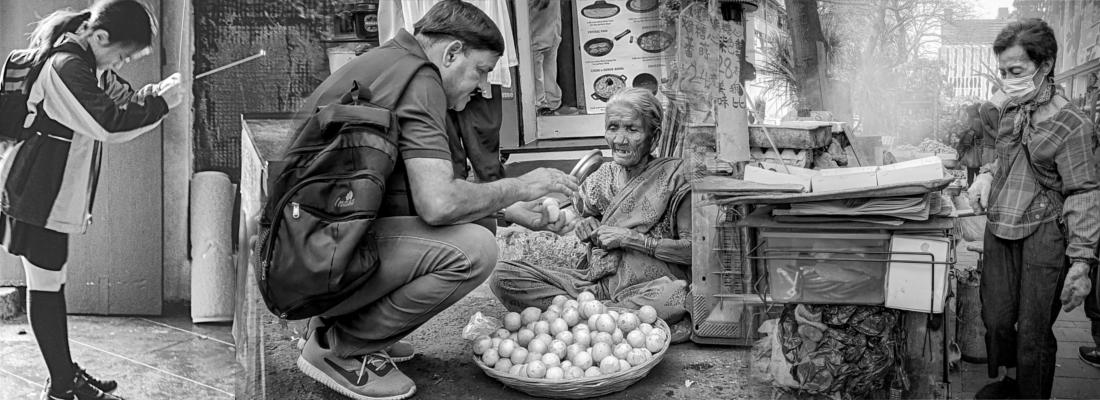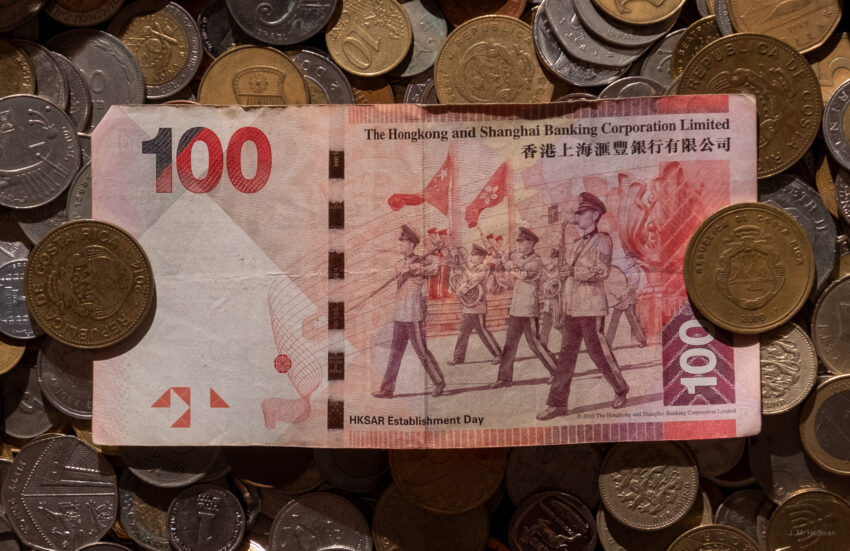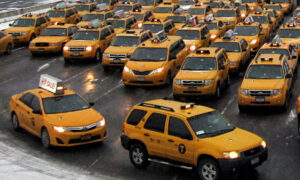Modern Hong Kong was born of a drug-induced marriage between two parents who quickly divorced for truly irreconcilable differences, parents who continue to fight publicly for custody of their now-grown offspring. The parents are Britain and China, and at the heart of Hong Kong’s story is the very nature of human day-to-day life: the last battleground of the Magna Carta, or, perhaps, yin and yang gone terribly awry.
Amazingly, this 100-Hong-Kong-dollar note represents Hong Kong’s unique history and her fragile and uncertain future.
In short, what happened in this: Trade brought Britain and China together, creating a mix of cultures seen nowhere else in the world. [Read more Searching for Hong Kong’s Soul.] Then a trade imbalance led to opium sales in China, which led to addiction there, which led to the First Opium War. That war’s resolution in 1842 saw two remote regions of the Qing dynasty ceded to England: Hong Kong Island and neighboring Kowloon. The Second Opium War, fought against a similar backdrop, ended in 1898 with England further acquiring a 99-year lease on the “New Territories” between Kowloon and mainland China.
When that lease expired in July 1, 1997, the New Territories returned to China, and — per a 1984 treaty dubbed the Sino-British Joint Declaration — so did Hong Kong Island and Kowloon.
Hong Kong, having lived with Britain for over a century, moved in with China.
Part of the 1984 Sino-British agreement promised 50 years of a “one country, two systems” doctrine: Starting in 1997 and until at least 2047 Hong Kong would be Chinese but would retain the Western-style freedoms and lifestyle to which she had become accustomed.
In part it worked. My 2016 visit to (Mainland) China required an arduous visa process and included a government minder who kept tabs on me, while visiting (Chinese) Hong Kong in 2019 was as easy and free as visiting Europe or Canada.
But mostly it didn’t work.
Like Hemmingway’s fabled bankruptcy, Hong Kong’s Western freedoms died gradually, then suddenly — gradually from 1997 through 2019, then suddenly in 2020. [Read more from The Economist: “ An anatomy of erasure: How a free and open Hong Kong became a police state.”]
At least, that’s how I see it. China’s president Xi Jinping said today that Hong Kong is “moving from chaos to governance.”
Why today? Because today marks the day Hong Kong moved from British to Chinese rule. Twenty-five years ago she ceased being a Crown colony within the British Empire and became the Hong Kong Special Administrative Region of the People’s Republic of China, or, in short the HKSAR.
And that brings us to the 100-dollar note, because the bill commemorates HKSAR Establishment Day, the day Hong Kong reverted to China. Yet it is a promissory note in the British style, issued by one of the three banks authorized to do so, and representative of free markets and free ideas. There in one piece of paper is perhaps the world’s most important clash of ideas: central control versus individual freedom.
One hundred HK dollars is, by design, always worth about US$12.80. Hong Kong is not a cheap city, and that sum didn’t go far when I was there. But more to the point, in 2019 I could use my money in Hong Kong to buy whatever I wanted, without fear of reprisals or repercussions.
Not any more.











Super interesting information, thanks.